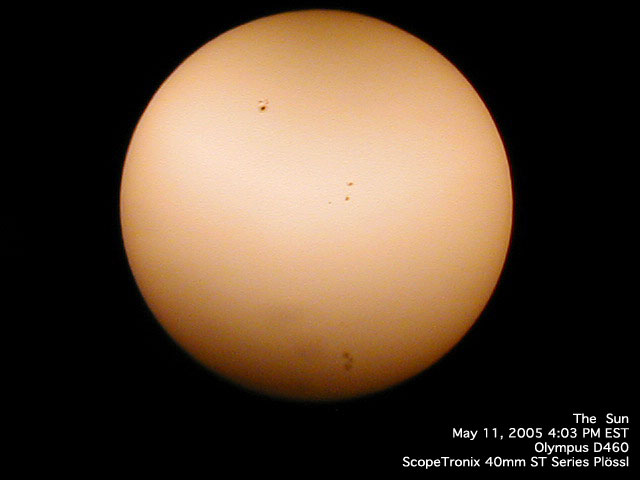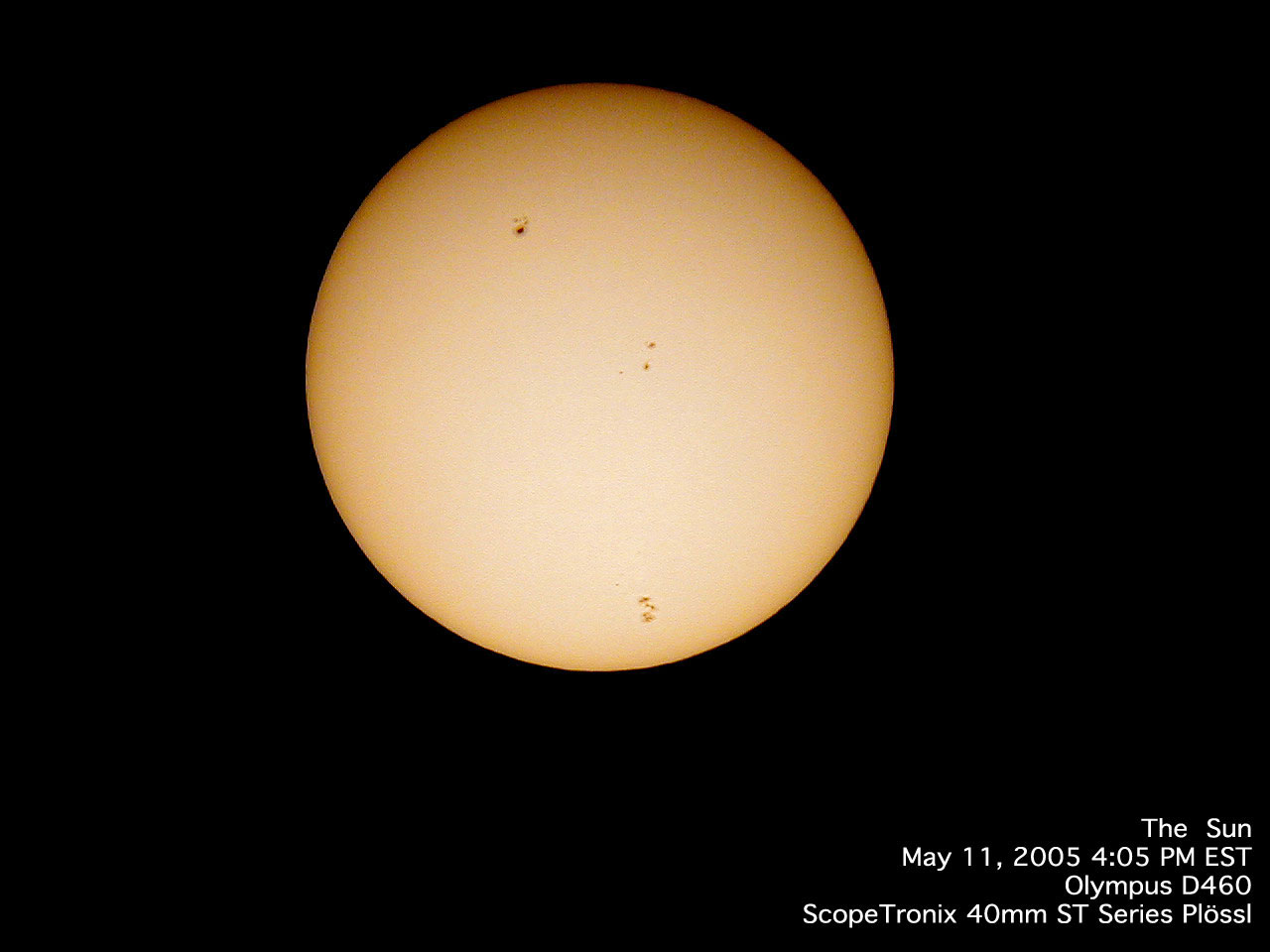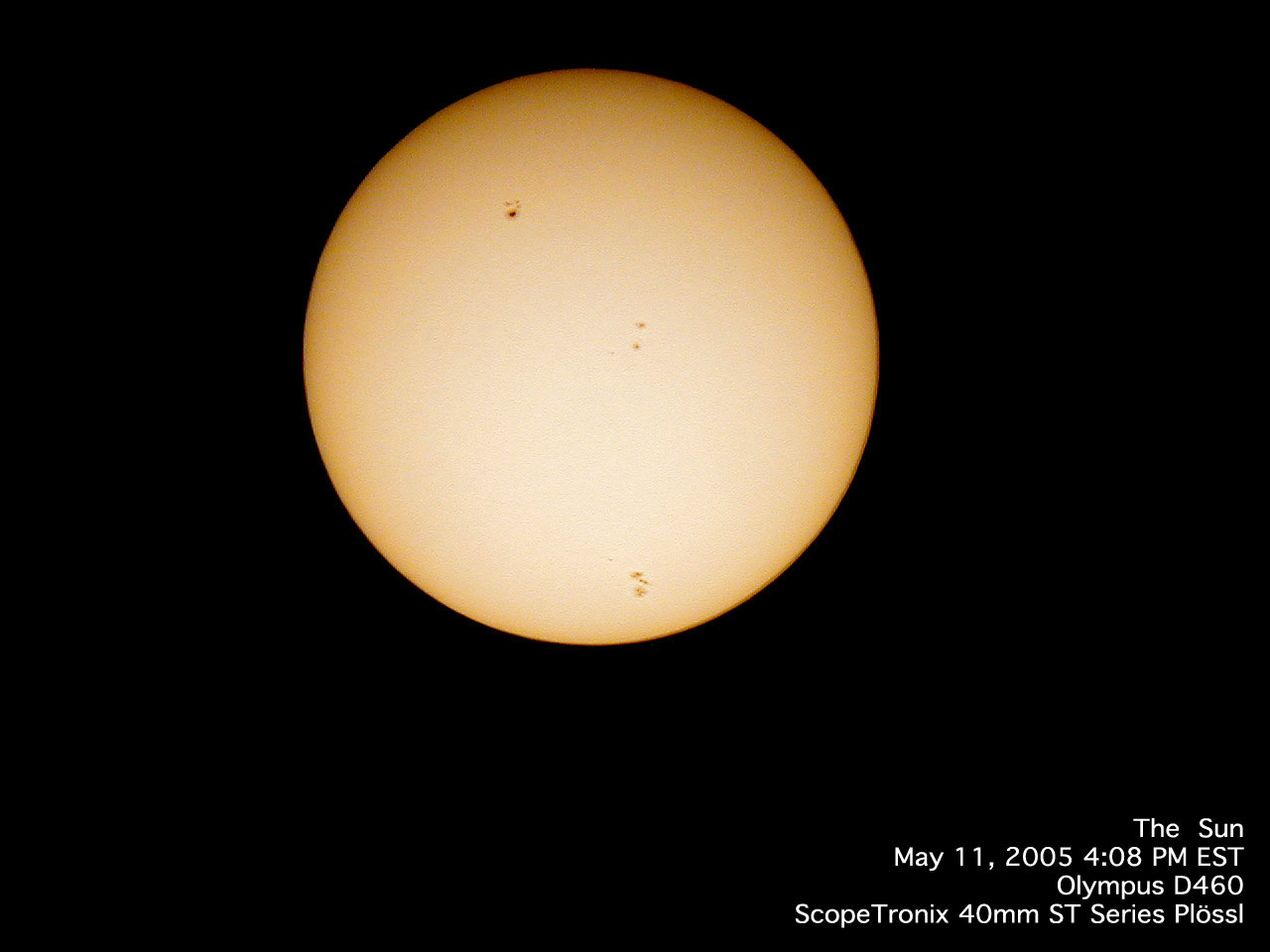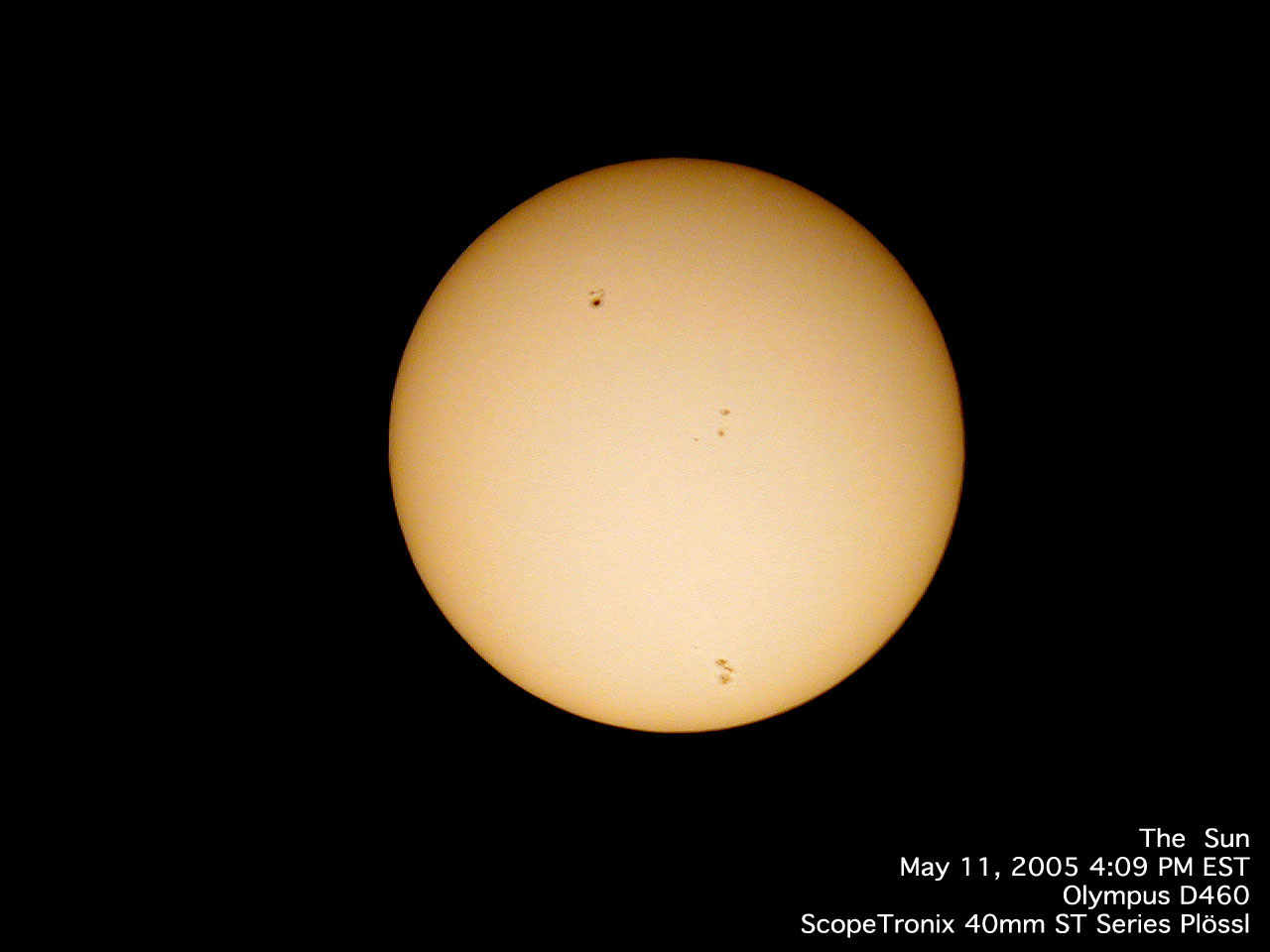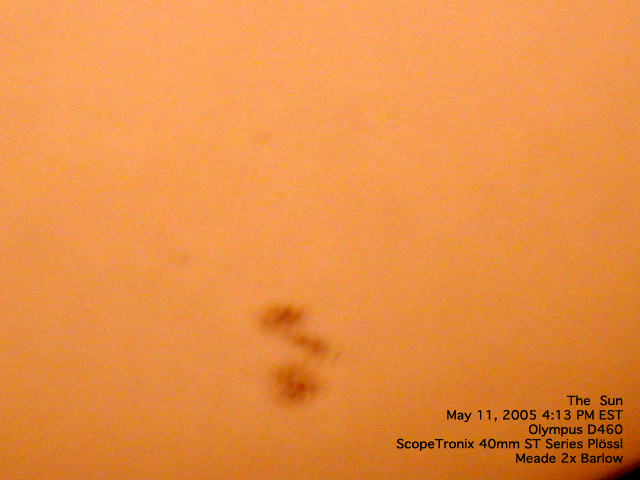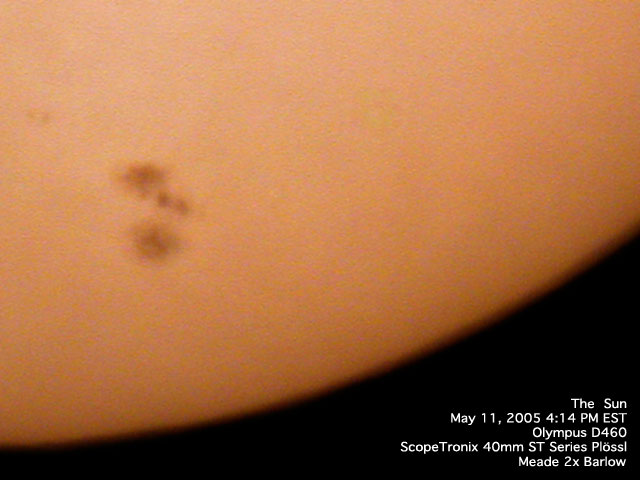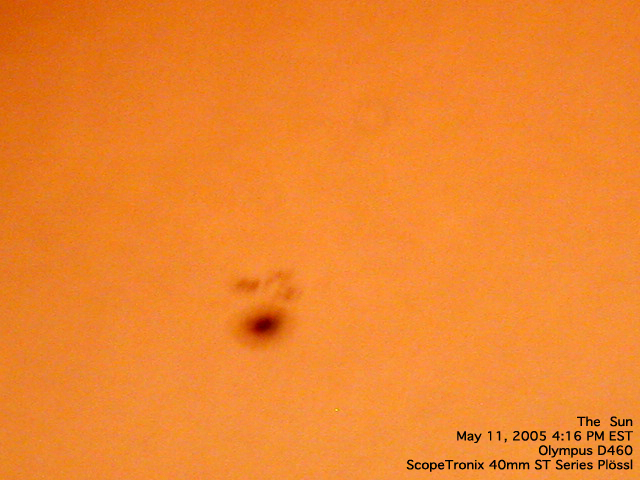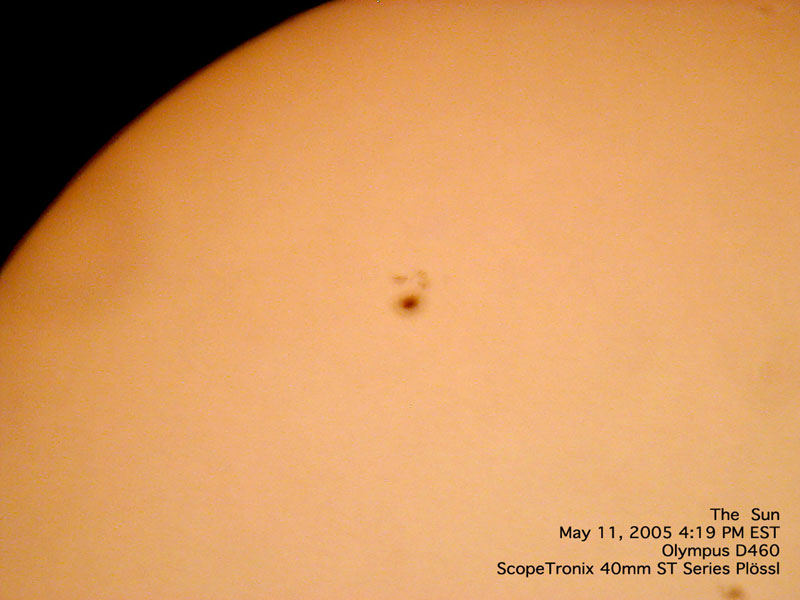What a bummer man. After a journey of millions and millions of miles, the engines cut off 130 feet too soon. I realize that the theory is old news but now it seems there may be visual confirmation. Mars Polar Lander Found at Last?
Twilight Moon
I went out this evening at dusk to fool with the ScopeTronix 40mm eyepiece. The Moon was waxing crescent about 4.4 days old. I went out at early dusk because it was due to set at 12:29 AM and was already into the west — about 40° above the horizon. I took some shots in different zoom and Barlow configurations just to see what I could come up with and even threw on the Moon filter towards the end for good measure.
I really like this eyepiece! It has a great FOV with the camera. I think the batteries in scope were dying though, as I could hear the focus motor straining and the slew controls became sluggish and unresponsive (Oh will I ever achieve perfect alignment?). So I don’t think it was tracking properly. I have the power supply so I guess next time I go out I’ll need to run an extension cord.
I should really remember to horizontally flip these BEFORE annotating them… anyway, here they are.
I’m going to call 050512_016 the “money shot” for the evening. 🙂
I combined two of the images above using Photoshop, to create this extra wide view.
On a different note, I had the good sense tonight to think about what I was going to do BEFORE I went out. So instead of taking out the full kit of everything I own and fumbling in the dark with packaging and whatnot, I had it all prepared in a mini gear kit. I even got the idea to clip the mini Maglite on the visor of my baseball cap! Not only could I see what I was doing, I had both hands free and no mosquitos flying into my mouth.
“There’s a little black spot on the Sun today…”
A few actually…
Took the scope out this afternoon to try out the new ScopeTronix 40mm Plössl. I was excited to get it as up until now I have been unable to image the entire disk of the Sun or Moon in a single frame. FINALLY! 🙂 Again, a difficult focus but at least with the Olympus I’m shooting through the eyepiece so I can get it reasonably in focus before snapping the camera on.
I was probably out there about 45 minutes. The great thing about the ETX90 is you can just grab it and bring it outside in 2 minutes. It’s really convenient — and I gotta tell you, if it wasn’t I probably wouldn’t use it… I’m lazy. Anyway, here are the results of the session.
Atmospheric Prismatic Dispersion
After looking more critically at the D460 image I took of Jupiter last night I noticed the red and blue “fringes” on the planet. I discovered this is a phenomenon known as Atmospheric Prismatic Dispersion. I don’t see it in any of the webcam images so it could possible be something about the optical coupling of the camera to the eypiece… or perhaps more likely is that the D460 is more sensitive to those wavelengths than the LPI.
Another indication of my poor conditions is the fact that Jupiter was about 59º above the horizon and I was still experiencing this effect… if it truly was APD.










